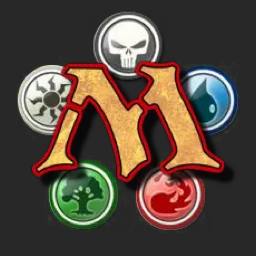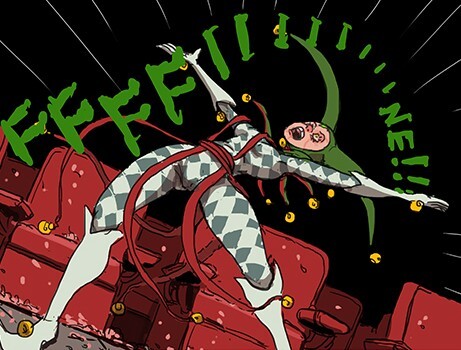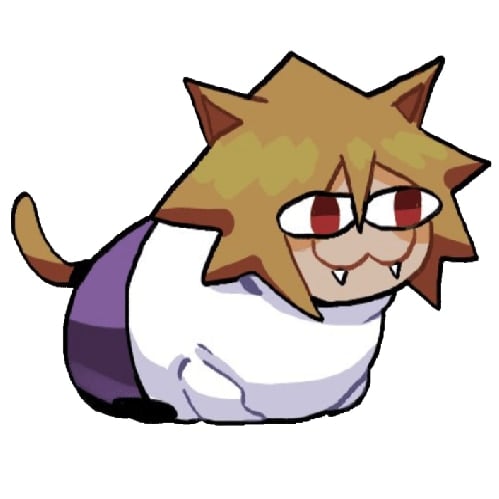I posed this question a few days ago as a comment and was encouraged to make it into a standalone post. I’m asking it specifically within the context of Commander, but suggesting your workflows for other formats would probably be helpful for people who aren’t me :P
As someone who has been casually playing MTG for several years, I’m only now starting to try to build my own EDH decks from scratch (as opposed to just buying and tweaking precons). I’ve tried to do my due diligence and research important topics like ramping & mana bases, read articles & posts about determining wincons & threats, and have scoured through EDHREC and Skryfall for thematic/synergistic cards… And all of that is great for finding cards that *could * work in a deck.
But this is the part that most articles & instructional pieces stop at (or glaze over). So now I have a giant pile of theoretical cards for a theoretical deck, and no idea which ones I should actually purchase or playtest with. There is no one-size-fits-all method for paring down your deck, so I’m hoping to hear how you, personally, go about doing it (and whether or not you’ve come across articles that address this part).
Currently I’m trying to use tags on Moxfield but it’s mostly a confusing mess as I try to trim down ~200 possibilities into a lean, functioning deck. Tags seem a bit too inflexible when I’m trying to tag by both function (ramp, threat, protection) and priority.
Big thanks to Mike, Andrew, gildedjake, and LovesTha BGU who have already chipped in some ideas at this comment. I’ll leave it up to them whether or not to repost their comments here.
This is by no means an especially good or tested method, but it’s what I do. Like you, I start with a larger list of cards that I import to Deckbox. First I trim the cards I don’t have the budget for, and then I look aty curve. Depending on whether I have an expensive or a cheap commander, I’ll focus on trimming down cards to get a curve that fits well with my commander (e.g. a medium curve with enough low cost creatures and ramp for higher-costing commanders, and a low-to-the ground curve with a few expensive finishers for lower-cost aggro commanders). Once my curve looks semi-decent, I’ll make sure that I have a nice mix of removal (both sweepers and spot removal) and evasion, and that I don’t have too many cards that don’t impact the board. Lastly I check to make sure I don’t have too much of one card type so that I’m robust enough against different types of removal. Then I goldfish the game a few times, see if my opening hands and draws make sense, and cut some more cards if needed. I don’t really have guidelines for “you need X amount of creatures and X amount of enchantments etc.” Every commander deck has a different focus and a different way to build. It helps looking at the 'average deck ’ option on edhrec to find what mix of card types most people are using. I also tend to favour cards that have a higher % of inclusion in decks on edhrec.
This is a good start. It’s easier to build decks up than pare them down.
Then once you’ve got your initial 99, let go of the 8×8 theory completely. Playtesting is better than that theory. It’s just a “get you going” starter.
Oof if building up is better I’m going to have to completely change the way I go about building decks, as my mindset has been to take the EDHREC “average deck” for a commander/style and think of it as, essentially, a precon that I then modify.
In the 8x8 theory, what does it mean by “choose 8 different kinds of effects you would like to see played”?Scratch that, I’m assuming they mean the card packs that are in the #8x8 tag on the blog. The first page was all Q&A stuff so I missed that
I thought it might be helpful to show with a few list how I tackle things
I am pro proxies, so budget is not the biggest factor for me. My play group also tends to believe that it makes sense to play test a $40+ card that might only work in a specific deck before you buy one.
That said I tend to buy decks in batches, so I might start playing the deck when I hit 80% purchased, and then either use some proxies or fill it with some of my existing collection.
For this deck I wanted to design something I felt would play like the T-X terminator after rewatching Terminator 3 recently. I really like tappedout’s tools for play testing decks, so most of my deck smithing happens virtually on that site.
Step 1: Initial starting point:
Blocking out lands and picking commander.
Maybe a few cards that that might have come up in thought process.
The north star for the deck is the T-X terminator from Terminator 3. Initial thoughts for deck is I want to have vehicles, might do something with time manipulation, and will probably want to run blue removal instead of counterspell suite. https://tappedout.net/mtg-decks/t-x-terminator-cosima-step-1/?cb=1690509142
Step 2: Next we are tossing pasta at the wall to see what we can work with. Most vehicles that are viable, some animation effects, and utility/man lands. Basics are reduced to account for new lands.
Time effects are not settled yet. Looking at suspend, extra turns, and phasing as potential themes. Had a game where a commander was phased out by the ferris wheel attraction, and when they could no longer roll to visit attractions the creatures were permanently phased out. Could generate a similar lock with stasis and eon hub, but I think that might be losing the terminator theme too much.
Depending on the amount of vehicles cut it might be worth looking into mass creature bounce and wheel effects. Additionally polymorph could be used to sac a crewed vehicle to get one of the few creatures in the deck. May also need to look into token generation or alt win cons. https://tappedout.net/mtg-decks/t-x-terminator-cosima-step-2/?cb=1690596198
Step 3: Adding in some token generation as well as some alt win cons. Reducing creature count is more appealing, so will look at effects that make bodies or become creatures.
Also including some mass bounce effects to remove creatures before I crew my board.
Land base modified to include some budget thinning, and some utility lands that I enjoy using. Also some mana accelerants added.
Some pet cards added. Next phase is cutting room floor. https://tappedout.net/mtg-decks/t-x-terminator-cosima-step-3/?cb=1690598823
Step 4: Initial pulls are to decrease creatures since some good token generation was found, and animating effects are not as required. Not going creatureless, but did reduce the total.
Some sorcery speed bounce removed and getting to the harder point to make cuts.
Last cuts will be the final version of deck. Will be focusing on cmc and card types. Will not reduce more than 45 artifacts total in deck, but also will add a few artifact lands since those were missed on earlier passes of the deck. https://tappedout.net/mtg-decks/t-x-terminator-cosima-step-4/?cb=1690741625
Alpha build: The deck should now be at a point where I use tapped out to get some sample hands and see what the first 5 draws look like.
I’ll then think over the deck for a few weeks to see if there are any other adjustments before I start looking to buy the deck. https://tappedout.net/mtg-decks/t-x-terminator-cosima-alpha-build/?cb=1690741611
Hey, thanks for the super detailed and useful response, Cloaca! My own attempts to deck build seem to be following similar steps, so I’ll definitely be referencing this. The deck snapshots at various points of completion are super helpful. Are those different decks or does TappedOut have a history feature? (That’s something I didn’t know I wanted until now).
Happy to help.
I wasn’t able to find a history functionality otherwise I would have replied a bit earlier. Those are different decks, and when I went to the next step I just copied the previous step and worked until I felt like I was changing my methods.
When I want to do an overhaul of an existing deck I’ll setup a private deck list in the event I want to restore that to how I enjoyed it.
I just make the deck perfect 1st try B)
no but seriously I just build up the deck with cards that look fun or look like they’ll fit in while keeping the mana curve in mind, then I cull cards for lands, then I just playtest it
I don’t think I’ve been playing for much longer than you have, but I have brewed some decks from scratch that can hold their own against my more experienced friends. I use Archidekt’s categories feature to organize my candidate cards by function, but I choose functions specifically related to my gameplan. So for example I’m working on a [[Ravenous Squirrel]] PDH deck and I started with a little fewer than 200 cards. I decided I needed creatures that want to stay on the field because they grow or generate repeatable materials (around 12), and creatures that want to be sacrificed (around 23). Then I split the remaining slots up roughly evenly into noncreature spells that provide removal, noncreature spells that give my big guys evasion, noncreature spells that return my little guys from the graveyard, and artifacts that want to be sacrificed. Once I have a sense of these categories and roughly what size I want them to be, it’s a lot easier to successively cull the weaker cards within them, or pick out the top ones. All of the cuts I put in the maybeboard so after some playtesting I don’t have to find them again if I think my proportions were off or a card doesn’t work out like I thought it would.







